|
| | Mathison Museum of Natural History |  |
|
+12landrover Kikimalou bmathison1972 Taos widukind Jill Duck-Anch-Amun lucky luke Caracal rogerpgvg Roger Bloodrayne 16 posters | |
| Author | Message |
|---|
widukind
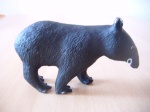
Country/State : Germany
Age : 48
Joined : 2010-12-30
Posts : 45779
 |  Subject: Re: Mathison Museum of Natural History Subject: Re: Mathison Museum of Natural History  Wed Jun 19, 2024 6:46 am Wed Jun 19, 2024 6:46 am | |
| |
|   | | bmathison1972
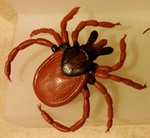
Country/State : Salt Lake City, UT
Age : 52
Joined : 2010-04-13
Posts : 6718
 |  Subject: Re: Mathison Museum of Natural History Subject: Re: Mathison Museum of Natural History  Wed Jun 19, 2024 1:20 pm Wed Jun 19, 2024 1:20 pm | |
| Species: Hexarthrius parryi Hope, 1842 Common name(s): giant fighting stag beetle About the Figure: Manufacturer: F-toys Series: Insect Hunter Beetle and Stag Beetle Year of Production: 2017 (2012) Size/Scale: Body length (including mandibles) approximately 7.0 cm, within scale 1:1 Frequency of species in toy/figure form (at time of posting): Uncommon Miscellaneous Notes: This is the second time we've seen H. parryi in the Museum. The figure has some articulation. Like many species, F-toys has produced H. parryi in multiple 'Insect Hunter' sets over the years. The first was in 2012, and it's the same sculpt used for today's 2017 version. The species was produced again in 2023, but I don't know if it is the same or a new sculpt (I stopped collecting the Insect Hunter figures several years back except for new species). About the Animal: Geographic distribution: Southeast Asia Habitat: Tropical broadleaf forests Diet: Larvae feed in rotting hardwoods; adults feed on tree sap and overripe fruit IUCN Status (at time of posting): Not Evaluated Miscellaneous Notes: There are currently four subspecies of H. parryi: H. p. parryi (Bangladesh, India, Cambodia, Laos, Myanmar, Thailand, Vietnam), H. p. deyrollei (Malaysia, Thailand, Myanmar), H. p. elongatus (Malaysia), and H. p. paradoxus (Java, Sumatra). [You must be registered and logged in to see this image.] |
|   | | widukind

Country/State : Germany
Age : 48
Joined : 2010-12-30
Posts : 45779
 |  Subject: Re: Mathison Museum of Natural History Subject: Re: Mathison Museum of Natural History  Wed Jun 19, 2024 2:33 pm Wed Jun 19, 2024 2:33 pm | |
| |
|   | | bmathison1972

Country/State : Salt Lake City, UT
Age : 52
Joined : 2010-04-13
Posts : 6718
 |  Subject: Re: Mathison Museum of Natural History Subject: Re: Mathison Museum of Natural History  Thu Jun 20, 2024 12:47 pm Thu Jun 20, 2024 12:47 pm | |
| Species: Dynastes satanas Moser, 1909 Common name(s): Satanas beetle About the Figure: Manufacturer: Sega Series: Mushi King - small series, standard Year of Production: unknown Size/Scale: Body length (including horns) approximately 6.0 cm for a scale of 1:1.9 for a large major male. Frequency of species in toy/figure form (at time of posting): Rare Miscellaneous Notes: This is the fifth species of Dynastes shown in the Museum! The Sega 'small standard series' were 10 sets of 10 figures each, for a total of 100 figures representing 65-75 species of Lucanidae and dynastine Scarabaeidae. The dates of release are currently unknown to me (c. 2008). The figures were produced in conjunction with Bandai and came with Pokemon-style playing cards. At the time of this writing, I think I have all but two of the species. For a review of the sets, please see the overview by forum member Beetle guy here. About the Animal: Geographic distribution: Bolivia Habitat: Montane rainforest Diet: Larvae feed in dead tree trunks; adults feed on sap, nectar, and overripe fruit IUCN Status (at time of posting): Not Evaluated (CITES Appendix II listed) Miscellaneous Notes: Dynastes satanas is endemic to the Bolivian Yungas in La Paz and Cochabamba Provinces. Its scarcity in nature has made it popular with collectors, and breeders, especially in Japan, are rearing it in captivity. Because of its restricted distribution and habitat destruction it is currently listed under CITES Appendix II. [You must be registered and logged in to see this image.] |
|   | | widukind

Country/State : Germany
Age : 48
Joined : 2010-12-30
Posts : 45779
 |  Subject: Re: Mathison Museum of Natural History Subject: Re: Mathison Museum of Natural History  Thu Jun 20, 2024 4:53 pm Thu Jun 20, 2024 4:53 pm | |
| |
|   | | bmathison1972

Country/State : Salt Lake City, UT
Age : 52
Joined : 2010-04-13
Posts : 6718
 |  Subject: Re: Mathison Museum of Natural History Subject: Re: Mathison Museum of Natural History  Fri Jun 21, 2024 11:41 am Fri Jun 21, 2024 11:41 am | |
| Species: † Pholiderpeton attheyi (Watson, 1926) About the Figure: Manufacturer: Play Visions Series: Prehistoric Amphibians Year of Production: 1998 Size/Scale: Raw figure length 7.5 cm. Measured along the midline, the body comes to approximately 12.0 cm for a scale of 1:33. Using skull as a metric (n=2.0 cm) scale comes to 1:20.5, but it's been noted that the head is oversized in this figure. Frequency of species in toy/figure form (at time of posting): Unique Miscellaneous Notes: This figure was marketed as Eogyrinus, which was synonymized with Pholiderpeton in 1987. About the Animal: Geographic distribution: Early Pennsylvanian (Bashkirian) of the present-day British Isles Habitat: Subtropical coal swamps Diet: Fish, amphibians, other aquatic and semi-aquatic tetrapods, invertebrates IUCN Status (at time of posting): N/A [prehistoric] Miscellaneous Notes: There is debate on whether P. attheyi was fully aquatic, semi-aquatic, or fully terrestrial (at least as an adult). [You must be registered and logged in to see this image.] |
|   | | widukind

Country/State : Germany
Age : 48
Joined : 2010-12-30
Posts : 45779
 |  Subject: Re: Mathison Museum of Natural History Subject: Re: Mathison Museum of Natural History  Fri Jun 21, 2024 5:09 pm Fri Jun 21, 2024 5:09 pm | |
| |
|   | | bmathison1972

Country/State : Salt Lake City, UT
Age : 52
Joined : 2010-04-13
Posts : 6718
 |  Subject: Re: Mathison Museum of Natural History Subject: Re: Mathison Museum of Natural History  Sat Jun 22, 2024 12:58 pm Sat Jun 22, 2024 12:58 pm | |
| Species: Microhyla ornata (Duméril and Bibron, 1841) Common name(s): ornate narrow-mouthed frog; ornate narrow-mouthed toad; ornamented pygmy frog; ant frog About the Figure: Manufacturer: Yujin Series: Frogs in Colour Pictorial Book Year of Production: 2009 Size/Scale: Snout-to-vent length approximately 3.2 cm for a scale of 1.5:1-1.2:1 for a male or within scale 1:1 for a large female Frequency of species in toy/figure form (at time of posting): Very rare (see below) Miscellaneous Notes: Kaiyodo also produced this species for the Choco Q Animatales series, but that figure requires assembly. Molecular studies show that M. ornata represents a species complex (see also below), and this figure might have originally intended to represent a population that is now considered a different species. However, with no evidence to indicate such, I see no reason to change the identification. It's likely the Kaiyodo figure represents a different species, however, as figures in that series typically represented Japanese species. About the Animal: Geographic distribution: India and Sri Lanka Habitat: Tropical and subtropical grassland, savanna, shrubland, moist broadleaf, dry broadleaf, and coniferous forests; usually among grasses and leaf litter Diet: Tadpoles feed on algae and detritus; adults feed on small insects and arachnids, with a preference for ants IUCN Status (at time of posting): Least Concern Miscellaneous Notes: Microhyla ornata was once believed to have been widely distributed in the Central Asian countries of Bangladesh, Bhutan, India, Myanmar, Nepal, Pakistan, and Sri Lanka. Molecular analysis and DNA barcoding demonstrates that true M. ornata is restricted to southwestern India (Tamil Nadu, Karnataka, Maharashtra, Andhra Pradesh) and Sri Lanka, and that the other populations represent three other species: M. mymensinghensis (Bangladesh, Northeast India), M. mukhlesuri (Bangladesh, Myanmar, Thailand, Vietnam, Laos), and M. nilphamariensis (India, Nepal, Bangladesh). [You must be registered and logged in to see this image.] |
|   | | Kikimalou
Admin
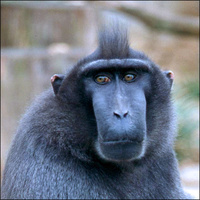
Country/State : Lille, FRANCE
Age : 60
Joined : 2010-04-01
Posts : 21185
 |  Subject: Re: Mathison Museum of Natural History Subject: Re: Mathison Museum of Natural History  Sat Jun 22, 2024 2:51 pm Sat Jun 22, 2024 2:51 pm | |
| Frogs in Colour Pictorial Book, an absolute must have series. I would be gappy to see Bandai or Toymany take up the challenge  |
|   | | widukind

Country/State : Germany
Age : 48
Joined : 2010-12-30
Posts : 45779
 |  Subject: Re: Mathison Museum of Natural History Subject: Re: Mathison Museum of Natural History  Sun Jun 23, 2024 11:02 am Sun Jun 23, 2024 11:02 am | |
| |
|   | | bmathison1972

Country/State : Salt Lake City, UT
Age : 52
Joined : 2010-04-13
Posts : 6718
 |  Subject: Re: Mathison Museum of Natural History Subject: Re: Mathison Museum of Natural History  Sun Jun 23, 2024 12:22 pm Sun Jun 23, 2024 12:22 pm | |
| Species: Kirkaldyia deyrollei (Vuillefroy, 1864) Common name(s): Japanese giant water bug About the Figure: Manufacturer: Kaiyodo Series: Chocoegg Animatales Series 2 Year of Production: 1999 Size/Scale: Body length (excluding appendages) approximately 4.2 cm for a scale of 1:1.1-1:1.5 Frequency of species in toy/figure form (at time of posting): Uncommon to rare Miscellaneous Notes: This is the second time we've seen K. deyrollei in the Museum. It might be the oldest figure of this species, at least by major well-known companies. Being one of the original Chocoegg Animatales figures, some assembly is required. Figures of this species are usually marketed as Lethocerus deyrollei (see below). About the Animal: Geographic distribution: East and Southeast Asia, Japan Habitat: Freshwater lakes, ponds, marshes, ditches, temporary pools, rice paddies Diet: Primarily aquatic insects, small fish, and amphibians; occasionally young turtles and water snakes IUCN Status (at time of posting): Not Evaluated Miscellaneous Notes: This species is more commonly known by the combination Lethocerus deyrollei. Vuillefroy originally described the species in the genus Belostoma in 1864. In 1909, Montandon described Kirkaldyia, which was later placed in synonymy with Lethocerus by Menke (1960) and Lauck & Menke (1961). In 2006, Goodwyn reestablished the genus in a worldwide revision of the subfamily Lethocerinae. At the time of that writing, Kirkaldyia was monotypic, containing only K. deyrollei; however, the author stated that two synonyms, K. aberrans and K. boutareli, were in the process of being elevated to species level by another author. I cannot find any indication that ever happened, and so from what I can tell, Kirkaldyia is still monotypic. Morphologic features separating the genera of Lethocerinae include the form of the tarsi and pads of setae, form of abdominal sternites, and shape of antennae. [You must be registered and logged in to see this image.] |
|   | | widukind

Country/State : Germany
Age : 48
Joined : 2010-12-30
Posts : 45779
 |  Subject: Re: Mathison Museum of Natural History Subject: Re: Mathison Museum of Natural History  Mon Jun 24, 2024 7:10 am Mon Jun 24, 2024 7:10 am | |
| |
|   | | bmathison1972

Country/State : Salt Lake City, UT
Age : 52
Joined : 2010-04-13
Posts : 6718
 |  Subject: Re: Mathison Museum of Natural History Subject: Re: Mathison Museum of Natural History  Mon Jun 24, 2024 1:02 pm Mon Jun 24, 2024 1:02 pm | |
| Species: Perna viridis Linnaeus, 1758 Common name(s): Asian green mussel About the Figure: Manufacturer: AAA Series: AAA Mollusks Year of Production: unknown Size/Scale: Shell length 8.0 cm, for a scale of 1:1-1:2.3 (within scale 1:1 for a small mature specimen) Frequency of species in toy/figure form (at time of posting): Very rare Miscellaneous Notes: AAA mollusks are cast from actual specimens and are often produced in multiple sizes. Today's figure is the smaller of their two P. viridis models; the other is approximately 5 inches/12.7 cm. About the Animal: Geographic distribution: Indo-South Pacific; introduced to several other parts of the world (see below). Habitat: Marine and brackish intertidal, subtidal, and estuarine environments; often on rocks, submerged pipes, ship hulls and ballasts, piers, and buoys Diet: Filter feeder of phytoplankton, zooplankton, and organic detritus IUCN Status (at time of posting): Not Evaluated Miscellaneous Notes: Perna viridis is native to the Indo-South Pacific, from the Persian Gulf to the Gulf of Thailand and south through Indonesia. It has been introduced to many other parts of the world, both intentionally for aquaculture and unintentionally as hitchhikers on the hulls and ballasts of ships. In many places where it was accidentally introduced, it is considered an invasive species where it competes with native fauna. Locations where P. viridis has become an invasive species include the North Pacific (China to Japan), Polynesia, the Caribbean (Jamaica to Venezuela), Southeastern United States (from the Carolinas to Florida), the Gulf Coast of North America, and northern and western Australia. Genetic evidence suggests that nearly all invasive populations around the world stemmed from the same native location, although there may have been a second event in the West Atlantic (northwest Africa). [You must be registered and logged in to see this image.] |
|   | | bmathison1972

Country/State : Salt Lake City, UT
Age : 52
Joined : 2010-04-13
Posts : 6718
 |  Subject: Re: Mathison Museum of Natural History Subject: Re: Mathison Museum of Natural History  Tue Jun 25, 2024 11:40 am Tue Jun 25, 2024 11:40 am | |
| Species: Anax imperator Leach, 1815 Common name(s): emperor; blue emperor About the Figure: Manufacturer: AAA Series: Insects Year of Production: unknown Size/Scale: Body length (excluding appendages) approximately 7.0 cm for a scale of 1:1-1:1.2 (slightly smaller than 1:1 for a small specimen). Using wingspan as a metric (n=9.2 cm), scale also comes to 1:1.1. Frequency of species in toy/figure form (at time of posting): Rare Miscellaneous Notes: This figure came in a polyvinyl bag set. It is not marketed at the species level, and the identification is my own (although it can easily represent several other darners with this color pattern, including the North American green darner Anax junius). I don't know of any figures specifically marketed as A. imperator, but I also consider the large blue dragonfly by Bullyland (ca. 1994) and the 2020 dragonfly by Papo this species. About the Animal: Geographic distribution: Africa, Europe, Middle East, West and Central Asia Habitat: Large, well-vegetated ponds and lakes, slow-moving rivers, canals Diet: Nymphs feed on aquatic invertebrates, tadpoles, small fish; adults feed on flying insects IUCN Status (at time of posting): Least Concern Miscellaneous Notes: The life cycle of A. imperator usually takes two years, but under exceptional circumstances can be completed in one. Females deposit eggs singly on floating vegetation or submerged plant stems. Eggs hatch in about three weeks. Nymphal development is restricted to about six months of the year, from May to October depending on latitude. The final nymphal instar is entered approximately one year after hatching. The last instar spends about nine months in the water without visible growth, before emerging the following spring. After emerging as adults, males become sexually mature in about 12 days while females take 13-16 days. [You must be registered and logged in to see this image.] |
|   | | widukind

Country/State : Germany
Age : 48
Joined : 2010-12-30
Posts : 45779
 |  Subject: Re: Mathison Museum of Natural History Subject: Re: Mathison Museum of Natural History  Tue Jun 25, 2024 4:04 pm Tue Jun 25, 2024 4:04 pm | |
| |
|   | | rogerpgvg
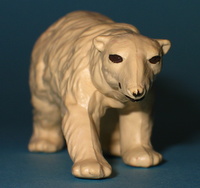
Country/State : UK
Age : 54
Joined : 2016-04-29
Posts : 3897
 |  Subject: Re: Mathison Museum of Natural History Subject: Re: Mathison Museum of Natural History  Tue Jun 25, 2024 8:48 pm Tue Jun 25, 2024 8:48 pm | |
| I sometimes see large blue and green dragonflies here (Scotland). Would it be this species or are there other large dragonflies with similar colours here? |
|   | | bmathison1972

Country/State : Salt Lake City, UT
Age : 52
Joined : 2010-04-13
Posts : 6718
 |  Subject: Re: Mathison Museum of Natural History Subject: Re: Mathison Museum of Natural History  Tue Jun 25, 2024 9:41 pm Tue Jun 25, 2024 9:41 pm | |
| - rogerpgvg wrote:
- I sometimes see large blue and green dragonflies here (Scotland). Would it be this species or are there other large dragonflies with similar colours here?
It's probably this one, but I don't know the full extent of your fauna off-hand. the dragonfiles of the British Isles are very well studied and it should be easy to track down. |
|   | | bmathison1972

Country/State : Salt Lake City, UT
Age : 52
Joined : 2010-04-13
Posts : 6718
 |  Subject: Re: Mathison Museum of Natural History Subject: Re: Mathison Museum of Natural History  Wed Jun 26, 2024 11:44 am Wed Jun 26, 2024 11:44 am | |
| Species: Lucilia silvarum (Meigen, 1826) Common name(s): common toad fly; marsh greenbottle fly About the Figure: Manufacturer: Skillcraft Series: Insect Lab Year of Production: 1998 Size/Scale: Body length (excluding appendages) approximately 3.7 cm for a scale of 8.2:1-3.7:1 Frequency of species in toy/figure form (at time of posting): Unique Miscellaneous Notes: Models in the Skillcraft Insect Lab set had to be assembled and painted by the consumer. They were marketed at the species level, so the collector can know what species to reference. These are some of my earliest attempts at painting figures. I am not happy about the all-white wings but the base color was a tan/beige. I've contemplated highlighting the wing veins with a darker color (e.g. grey) but I don't want to make it worse (and it might be hard since I added a semi-gloss finish). About the Animal: Geographic distribution: Holarctic Habitat: Woodlands and clearings, fields, marshland, urban and suburban areas Diet: Larvae are saprophagous and primarily feed on carrion (see below); adults feed on pollen and nectar IUCN Status (at time of posting): Not Evaluated Miscellaneous Notes: Lucilia silvarum is now believed to be strictly saprophytic. Previous records of myiasis of frogs and toads by this species are now believed to be caused by the cryptic sibling species, L. bufonivora. [You must be registered and logged in to see this image.] |
|   | | widukind

Country/State : Germany
Age : 48
Joined : 2010-12-30
Posts : 45779
 |  Subject: Re: Mathison Museum of Natural History Subject: Re: Mathison Museum of Natural History  Wed Jun 26, 2024 4:40 pm Wed Jun 26, 2024 4:40 pm | |
| |
|   | | bmathison1972

Country/State : Salt Lake City, UT
Age : 52
Joined : 2010-04-13
Posts : 6718
 |  Subject: Re: Mathison Museum of Natural History Subject: Re: Mathison Museum of Natural History  Thu Jun 27, 2024 11:42 am Thu Jun 27, 2024 11:42 am | |
| Species: Diadophis punctatus (Linnaeus, 1766) Common name(s): ring-necked snake; ringneck snake About the Figure: Manufacturer: Wing Mau Series: Snakes Year of Production: unknown Size/Scale: Measured along midline body length approximately 23.0 cm for a scale of 1:1.1-1:2.3 (see below) Frequency of species in toy/figure form (at time of posting): Very rare Miscellaneous Notes: This sculpt was also produced for Club Earth for their Snakes to Go collection. It is specifically marketed as a southern ring-necked snake, implying the subspecies D. p. punctatus. The scale above is calculated based on a size range of 25-52 cm. Size can vary by subspecies and the high end of that range is based on the maximum size of D. p. punctatus specifically. The 'ring' on the neck is a little farther back than it should be (should be closer to the base of the head). About the Animal: Geographic distribution: Much of North America outside of the drier regions of the Southwest Habitat: Highly variable based on subspecies. Northern and western subspecies tend to live in open woodlands and around rocky hillsides, often under bark of dead trees or under rocks; southern subspecies tend to be round in wetter areas, such as riparian woodlands, damp forests, and swamps. Diet: Small reptiles (including juvenile snakes of other species), small amphibians, earthworms IUCN Status (at time of posting): Least Concern Miscellaneous Notes: Different populations of D. punctatus have different defensive strategies. In populations that have orange-red color of their ventral side of their tail region, an alarmed snake will coil it tail and display the brightly color to the would-be predator. Western subspecies will often feign death if provoked. The ring-necked snake can also release a musky saliva from the corners of its mouth accompanied by a pungent, clinging odor. [You must be registered and logged in to see this image.] |
|   | | widukind

Country/State : Germany
Age : 48
Joined : 2010-12-30
Posts : 45779
 |  Subject: Re: Mathison Museum of Natural History Subject: Re: Mathison Museum of Natural History  Thu Jun 27, 2024 4:12 pm Thu Jun 27, 2024 4:12 pm | |
| |
|   | | lucky luke
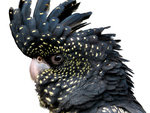
Country/State : FRANCE Saint-Louis
Age : 62
Joined : 2010-07-17
Posts : 6298
 |  Subject: Re: Mathison Museum of Natural History Subject: Re: Mathison Museum of Natural History  Thu Jun 27, 2024 8:10 pm Thu Jun 27, 2024 8:10 pm | |
| |
|   | | bmathison1972

Country/State : Salt Lake City, UT
Age : 52
Joined : 2010-04-13
Posts : 6718
 |  Subject: Re: Mathison Museum of Natural History Subject: Re: Mathison Museum of Natural History  Fri Jun 28, 2024 11:41 am Fri Jun 28, 2024 11:41 am | |
| Species: Centurio senex Gray, 1842 Common name(s): wrinkle-faced bat About the Figure: Manufacturer: Play Visions Series: Bats Year of Production: 1996 Size/Scale: Wingspan approx. 8.7 cm. Body length approx. 3.2 cm for a scale of 1:1.8-1:2.2 Frequency of species in toy/figure form (at time of posting): Unique Miscellaneous Notes: The 1996 Play Visions Bats collection features 6 species of bats, 4-6 of which are unique as toys and figures, depending on the species assigned to a couple of them. Four that are most certainly unique include the spotted bat, California leaf-nosed bat, Egyptian fruit bat, and today's wrinkle-faced bat. There is also a horseshoe bat and vampire bat, both of which could represent more than one species. About the Animal: Geographic distribution: Central America and northern South America, from Mexico to Venezuela, Colombia, Trinidad and Tobago Habitat: Dense, second-growth tropical evergreen and deciduous forests Diet: Fruit IUCN Status (at time of posting): Least Concern Miscellaneous Notes: Centurio senex can produce a bite force up to 20% higher than other bats of a similar size and can generate the largest biting force, relative to its size, of any phyllostomid bat. This is believed to be an adaption for eating fruit and seeds, as most related bats feed on insects. [You must be registered and logged in to see this image.] |
|   | | widukind

Country/State : Germany
Age : 48
Joined : 2010-12-30
Posts : 45779
 |  Subject: Re: Mathison Museum of Natural History Subject: Re: Mathison Museum of Natural History  Sat Jun 29, 2024 12:03 pm Sat Jun 29, 2024 12:03 pm | |
| |
|   | | bmathison1972

Country/State : Salt Lake City, UT
Age : 52
Joined : 2010-04-13
Posts : 6718
 |  Subject: Re: Mathison Museum of Natural History Subject: Re: Mathison Museum of Natural History  Sat Jun 29, 2024 1:09 pm Sat Jun 29, 2024 1:09 pm | |
| Species: Bos taurus Linnaeus, 1758 Common name(s): Holstein cattle; Holstein-Friesian cattle About the Figure: Manufacturer: Schleich Series: Farm World Year of Production: 2016 Size/Scale: Height at shoulders approximately 7.5 cm for a scale of 1:19.3-1:22 Frequency of breed in toy/figure form (at time of posting): Very common Miscellaneous Notes: Such an iconic breed, it took me a long time to settle on a Holstein figure. So many of them available just didn't appeal to me. It was Gwangi's review of this Schleich model on the Animal Toy Blog that finally made me decide to get it. About the Animal: Geographic distribution: The breed originated in Europe in a region which today is part of the Netherlands; it is now bred worldwide and can be found in more than 160 countries. Habitat: Grasslands, fields, pastures Diet: Grasses; diet may be supplemented with hay, silage, shelled corn IUCN Status (at time of posting): Domesticated Miscellaneous Notes: The Holstein originated over 2000 years ago in what is now the northern Dutch provinces of North Holland and Friesland. The breed was created by crossing black cattle of the Batavian people and the white cattle of the Frisian people. It was bred for milk production and today is the dominant dairy cattle in much of the world. [You must be registered and logged in to see this image.] |
|   | | Sponsored content
 |  Subject: Re: Mathison Museum of Natural History Subject: Re: Mathison Museum of Natural History  | |
| |
|   | | | | Mathison Museum of Natural History |  |
|
Similar topics |  |
|
| | Permissions in this forum: | You cannot reply to topics in this forum
| |
| |
| |
